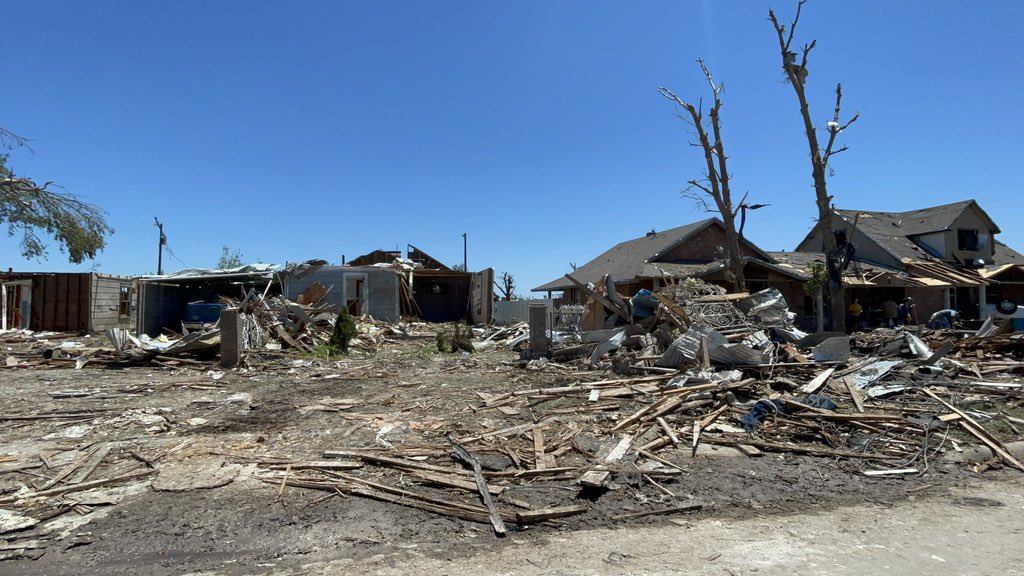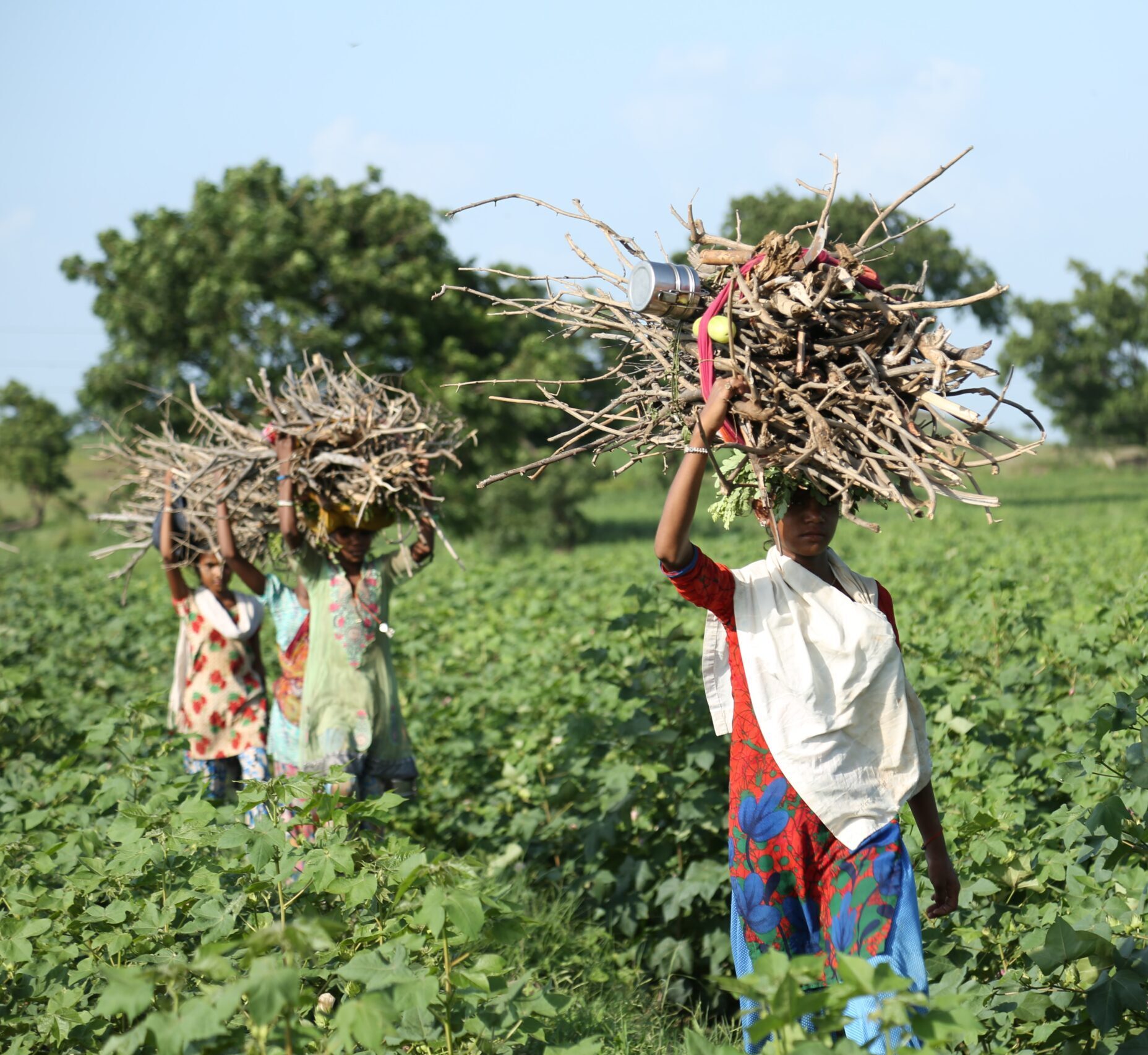What we’re watching: Weekly disaster update, June 20

We know all too well that disaster can strike anytime, anywhere in the world. Some disasters make headlines; others do not. Here at the Center for Disaster Philanthropy (CDP), we monitor the status of disasters worldwide and compile a list of the ones we’re tracking weekly, along with relevant disaster-related media coverage.
Here’s what we’re watching for the week of June 19, 2023.
New or Emerging Disasters
Storms – U.S. South: On June 18, the National Weather Service (NWS) warned that parts of the southern U.S. were expected to get severe storms and heavy rainfall, as well as excessive heat warnings and critical fire weather risk.
A series of extreme weather events over the holiday weekend resulted in six deaths, with more than 100 others injured and power outages for nearly 500,000 customers. As of the morning of June 20, Oklahoma had the most customers still without power, with more than 150,000, according to PowerOutage.us.
A reported tornado hit Jasper County in Mississippi on June 18, leaving injuries and structural damage. South Central Regional Medical Center in Laurel, Mississippi, received 20 storm victims from the Louin area, including one who died. The NWS gave the tornado a preliminary rating of EF-3, with estimated peak wind speeds of 150 miles per hour.
Perryton, a rural town in the panhandle of Texas, is reeling after a tornado killed three people on June 15, including an 11-year-old boy. Fire Chief Paul Dutcher said, “I’ve never seen anything like this in my 33 years doing this.” CDP learned from partners that at least 125 homes have been destroyed in Perryton, and at least 144 more are damaged. Texas Governor Greg Abbott announced a disaster declaration for Camp, Gregg, Hopkins, Panola, Smith and Titus counties.
On June 18, NWS in Tulsa issued an advisory for 100-mile-per-hour winds, a first for the service there. The storm’s damage included downed trees and mass power outages. Red Cross Oklahoma said it was assessing damage at its Tulsa office. On June 18, Tulsa Mayor GT Bynum signed a disaster declaration for the city.
As of June 20, nearly 26 million people across much of Texas and parts of southern Oklahoma remained under an excessive heat warning as cities surpassed records. San Antonio recorded 105 degrees on June 19, a record for that day. The heat index in Houston, where temperatures reached 100 degrees, made it feel like 110. Several cooling centers were open in Texas.
A recent study warned that thousands would likely need emergency medical care for heat stroke and other illnesses in an extended power failure in parts of the U.S. Heat waves are among the most dangerous natural hazards. CDP’s Extreme Heat Issue Insight provides information about this hazard and how philanthropy can help.
Cyclone – India: Cyclone Biparjoy made landfall near the coastal village of Jakhau, in Gujarat state, India, on June 15. The storm had wind speeds of 53 miles per hour (85 kilometers per hour) and gusts up to 65 miles per hour (105 kilometers per hour). Although the storm was less severe than expected once it reached land, Biparjoy still brought heavy rain and strong winds that killed at least five people and displaced thousands. Rainfall in the worst-affected districts of Gujarat ranged between 6-12 inches (150-300 millimeters) during 24 hours. As of June 20, Biparjoy’s remnants were lingering over northwest Madhya Pradesh and are expected to continue dumping heavy rains over East Rajasthan.
Previous/Ongoing Disasters
Atlantic Hurricane Season: Tropical Storm Bret formed on June 19 in the far eastern Atlantic, farther east than any other named storm in June by over 1200 miles.
As Michael Lowry described on his blog, Eye on the Tropics, “The first storm formation in the deep tropical Atlantic doesn’t typically come until around the first week of August.”
Bret is currently the second named storm of the Atlantic hurricane season and would be the first named hurricane of the season. The storm is expected to approach the Lesser Antilles islands by late this week and likely poses no threat to South Florida or the mainland U.S.
A second system, dubbed AL93, is a tropical wave “several hundred miles” away from the Cabo Verde Islands. According to the National Hurricane Center’s outlook issued June 20, it has a 70% chance of formation in the next 48 hours. There is no record of two such storms active at once in June east of the Antilles.
For more, see our 2023 Atlantic Hurricane Season disaster profile.
Complex Humanitarian Emergency – Sudan: On June 18, Sudan’s army and the rival Rapid Support Forces (RSF) agreed to cease attacks and seek military advantage during 72 hours, as well as allow for delivery of aid. Previous attempts at a ceasefire have failed to stop the fighting. On the second day of the truce, killings and attacks on communities in the Darfur region by the RSF and allied militias have been reported. Civil society groups say such attacks clearly violate the fragile ceasefire.
At a pledging event in Geneva on June 19, the UN Secretary-General António Guterres told donors that $3 billion was needed to assist people in Sudan and those who fled to neighboring countries. International donors pledged around $1.5 billion, covering only half of the UN’s request. Nearly 25 million people in Sudan require humanitarian aid, while four million children and pregnant or nursing mothers are acutely malnourished.
For more, see our Sudan Humanitarian Crisis disaster profile.
European Migration – Greece: As crackdowns on migration to Europe continue, scores of migrants and refugees are forced to take more dangerous journeys to reach safety. Tragically, dozens are dead after a fishing boat full of migrants trying to reach Italy from Libya capsized off the Greek coast last week. Authorities confirmed the death toll was 79, but hundreds remain missing, and the actual death toll is feared to be in the hundreds. As of June 20, only 104 survivors have been found, but none of these are women or children who were allegedly kept in the ship’s hold.
Questions over the role of the Greek coastguard in this incident remain. A group of human rights and nongovernment organizations have called for a full investigation into the deaths and “for a European asylum system that guarantees people the right to seek protection in full respect of their rights.”
Following the worst tragedy at sea for several years, the International Organization for Migration, the UN High Commissioner for Refugees and the UN Refugee Agency also called “for urgent and decisive action to prevent further deaths at sea.”
In addition to the disasters listed above, we actively monitor the following disasters or humanitarian emergencies. For more information, see the relevant disaster profiles, which are updated regularly.
- Afghanistan Humanitarian Crisis
- Cyclone Mocha
- Horn of Africa Hunger Crisis
- 2023 Turkey-Syria Earthquake
- 2023 US Tornadoes
U.S. Midwest Low-Attention Disasters
The Midwest is regularly faced with low-attention disasters that affect people across the region. CDP’s Midwest Early Recovery Fund (ERF) effectively funds efforts that catalyze equitable disaster recovery.
These are some of the latest disasters and related news the ERF team is monitoring:
- Ryegate and Lavina, Montana, received more than an inch of rain that flooded properties and basements. Residents in Lavina said it was the worst flooding they had seen since 2011. According to the Montana Voluntary Organizations Active in Disaster, the disaster affected 15 homes.
- At least five tornadoes were reported in Oklahoma during the severe storms on June 15. Winds in Norman were recorded at 84 miles per hour. Other towns where tornadoes were spotted included Arnett, Crawford, Henryetta, Velma and Loco.
Complex Humanitarian Emergencies – Democratic Republic of Congo (DRC)
Many places worldwide are experiencing emergencies caused by conflict, climate change, drought, famine, economic challenges and other conditions that combine to create a complex humanitarian emergency (CHE). CDP maintains complete profiles on several CHEs, and what CDP considers Level 1 CHEs are profiled in this weekly blog post and tracked.
The humanitarian emergency in DRC is one of the longest running on the African continent. According to the United Nations Office of the Coordination of Humanitarian Affairs, “Until a solution to the conflict is identified, humanitarian needs are likely to continue to increase, with insufficient levels of funding to assist all those in need.”
The conflict has brought reports of widespread human rights abuses, including murder, rape, looting and the burning of homes. This month, Human Rights Watch (HRW) said the Rwanda-backed M23 armed group “appears responsible for mass graves containing scores of bodies found in the village of Kishishe, North Kivu province.”
In their May 20 update on the country situation, ACAPS said during the first quarter of 2023, reported cases of gender-based violence in North Kivu jumped 37%. Sexual violence has particularly increased in internally displaced people (IDP) sites where people displaced by conflict live. The IDP sites are overcrowded with a lack of access to resources.
The conflict is contributing to a rise in food insecurity. Approximately 25.8 million people in the DRC will face acute food insecurity in 2023, about three times the population of Switzerland and more people than in the U.S. state of Florida. The crisis has reached such a level that officials have triggered an immediate scale-up of humanitarian operations in eastern DRC. The protocols call on UN agencies and partners to deploy additional capacity and the resources required to increase the scale of humanitarian assistance.
Despite the scale of the needs, funding for the humanitarian response remains low. Donors have funded just 27.7% of the $2.25 billion humanitarians require to support 10 million people in 2023.
Upcoming webinars

July 13: The gendered nature of climate change

Aug. 10: Disaster case management: Navigating recovery one person at a time
What We’re Reading
- Texas towns are starving for capital and lack the resources to apply for grants. This group hopes to help. – The Texas Tribune: Small governments struggle to fund costly infrastructure projects across rural Texas. Federal and state grants can help, but navigating the process and completing grant applications are arduous. Texas Rural Funders launched the Grants Hub this month, a webpage with a roster of federal and state grants that rural entities can apply for.
- The LGBTQ+ Index: Measuring Giving to LGBTQ+ Organizations – Indiana University Lilly Family School of Philanthropy: The LGBTQ+ Index data presented in this report are designed to provide philanthropy scholars and practitioners, policymakers, and the public with a deeper understanding of LGBTQ+ organizations. LGBTQ+ organizations received approximately $560 million in philanthropic support in 2019, which made up 0.13% of overall charitable giving.
- Philea Forum 2023: A New Compass for Europe – Alliance: This month, the National Foundation for Civil Society Development in Croatia joined forces with Philea, Europe’s leading philanthropy support organization, to host its annual gathering of philanthropic elites, national networks and member associations. Alliance has collected daily reports, written reflections and news reports from the gathering.
- Q&A: What does World Refugee Day mean to refugees? – The New Humanitarian: Flipping the Narrative is a series written by people with first-hand experience of forced displacement. It aims to put their voices at the center of conversations relevant to their lives. World Refugee Day is June 20, and The New Humanitarian spoke to Flipping the Narrative authors to understand better what the occasion means to them.
- Brazil develops the first vaccine against schistosomiasis, the disease of swollen bellies – El Pais: Brazil is close to manufacturing the world’s first vaccine against schistosomiasis. The disease has a low mortality rate but drastically lowers quality of life. The vaccine results from a collaboration between the Oswaldo Cruz Foundation, based in Rio de Janeiro, and the U.S. company Orygen Biotechnology. Researchers are completing the final phase of human testing.
The discovery of a young black bear less than five miles from the White House led to an interesting emergency task force, including the Metropolitan Police Department, the local Humane Rescue Alliance, the Maryland Department of Natural Resources and the National Zoo.

